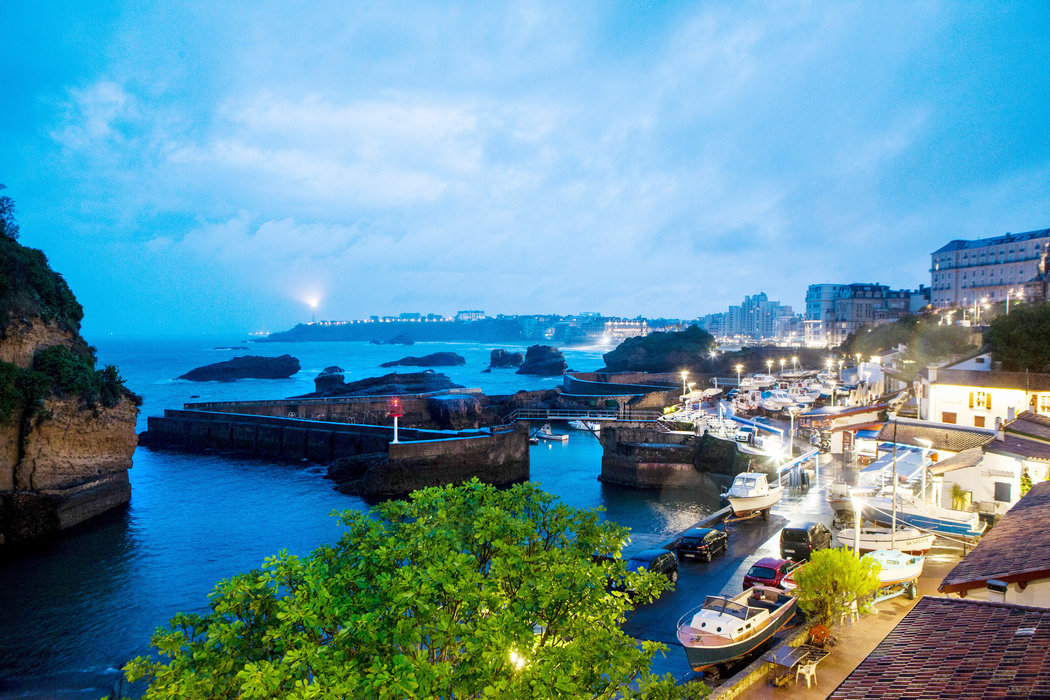The Basque city of Biarritz, located in Iparralde in the provice of Lapurdi, was recently in the news as it hosted the G7 summit. Much was made of especially the first ladies strolling and visiting what is now a popular tourist and surfing destination. It was a playing spot for kings and queens. But, Biarritz is an old city with an origin that is based in whaling.

the New York Times, taken by Markel Redondo.
- The first mention of Biarritz comes in the so-called Libro de Oro or Cartulario de Bayona, in 1186, in which the city is called Bearids, and later in 1261 it is referred to as Beiarrids. Just a little earlier, in 1168, the same book makes reference to a Galindus de Beariz, who had transferred all of his ecclesiastical assets from the sanctuary San Martín to the church of Saint Mary of Baiona.
- Biarritz’s entire economy was based on whaling. At one point, Biarritz had watchtowers in which sailors scanned the horizon for whales. When they saw one, they would set fire to wet straw, creating a huge amount of smoke that would alert everyone to the presence of the whale. Whaling was an important part of life and work in Biarritz until about March 3, 1686, when the last whale was hunted. The coat of arms of Biarritz features a whaling crew in pursuit of a whale.
- In 1609, the persecution of witches reached Lapurdi as Pierre de Lancre investigated cases of witchcraft in this part of the country. In depositions made by several witnesses, it was said that the wizards and witches of Biarritz were known to have a toad leg drawn on their left eye.
- Biarritz started to become something other than a whaling city when, in 1843, the writer Victor Hugo visited. He praised the small city, writing: “I have not met in the world any place more pleasant and perfect than Biarritz. I have never seen the old Neptune throwing joy and glory with such a force in the old Cybele. All this coast is full of humming. Gascony’s sea grinds, scratches, and stretches on the reefs its never ending whisper. Friendly population and white cheerful houses, large dunes, fine sand, great caves and proud sea, Biarritz is amazing. My only fear is Biarritz becoming fashionable. Whether this happens, the wild village, rural and still honest Biarritz, will be money-hungry. Biarritz will put poplars in the hills, railings in the dunes, kiosks in the rocks, seats in the caves, trousers worn on tourists.”
- Biarritz became famous as a destination when Empress Eugenie, the wife of Napoleon III, built a palace on the beach in 1854. The palace, now the Hôtel du Palais, attracted many celebrities, including King Edward VII of the United Kingdom, Ava Gardner, and Frank Sinatra.
- Biarritz is also recognized at the first place someone surfed in Europe. During the filming of The Sun Also Rises, a friend of the director, Peter Viertel, visited from California, bring his surfboard and first surfing the waves of any European beach. Today, Biarritz is a popular destination for surfing.
Primary sources: Estornés Zubizarreta, Idoia; Berger, Marie Claude. BIARRITZ. Enciclopedia Auñamendi, 2019. Available at: http://aunamendi.eusko-ikaskuntza.eus/es/biarritz/ar-13815/; Wikipedia.



Biarritz? In Euskal Herria we call it Miarritze.
Thanks Drew. I had thought both Biarritz and Miarritze were the Basque names (both were Basque). Thanks for the clarification.